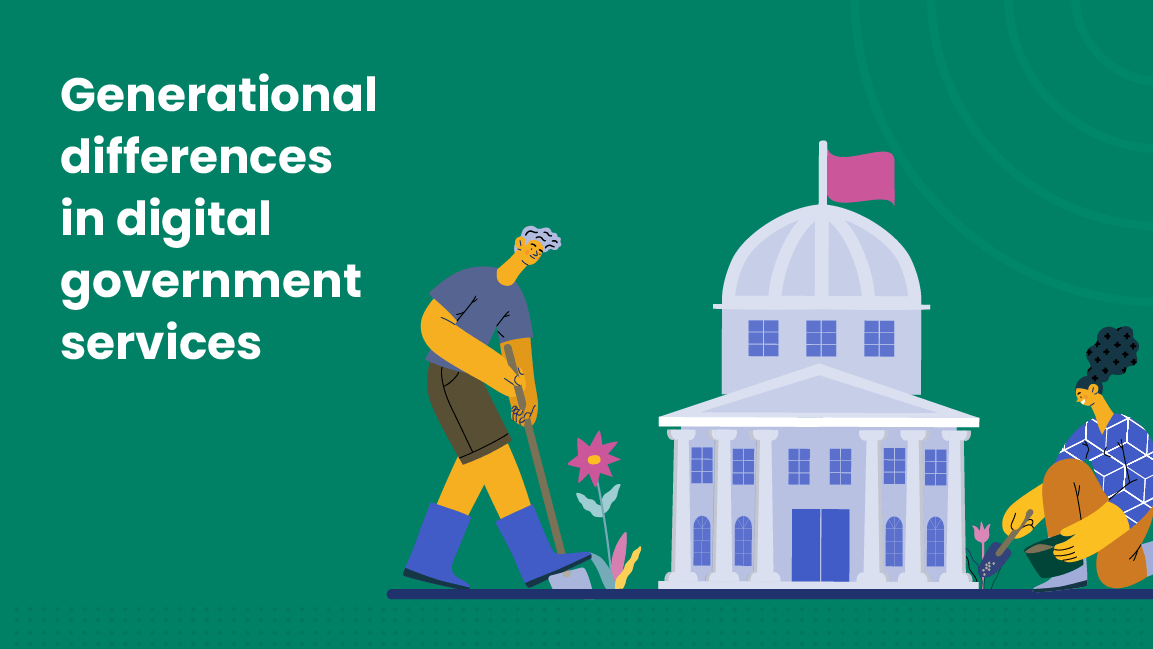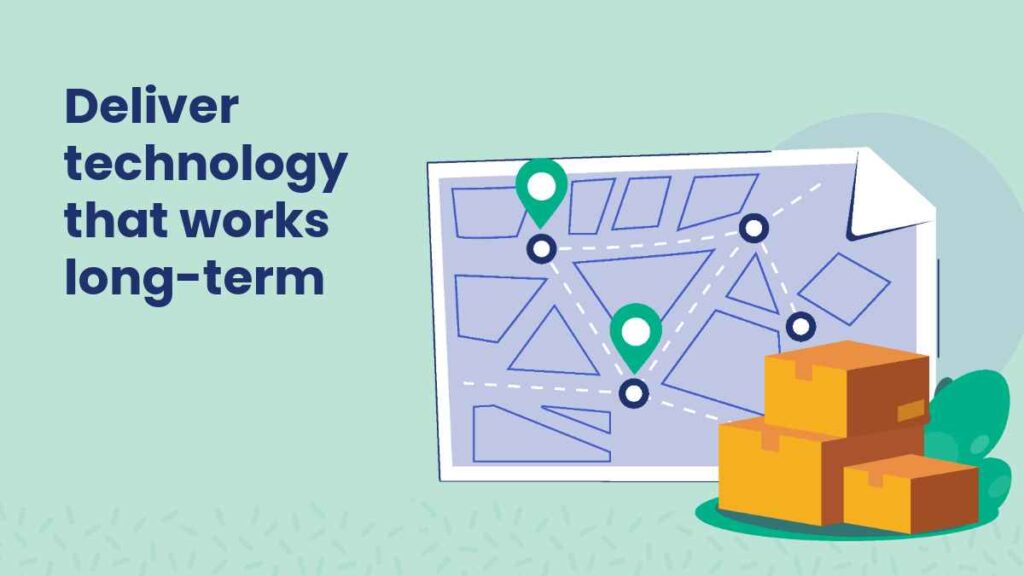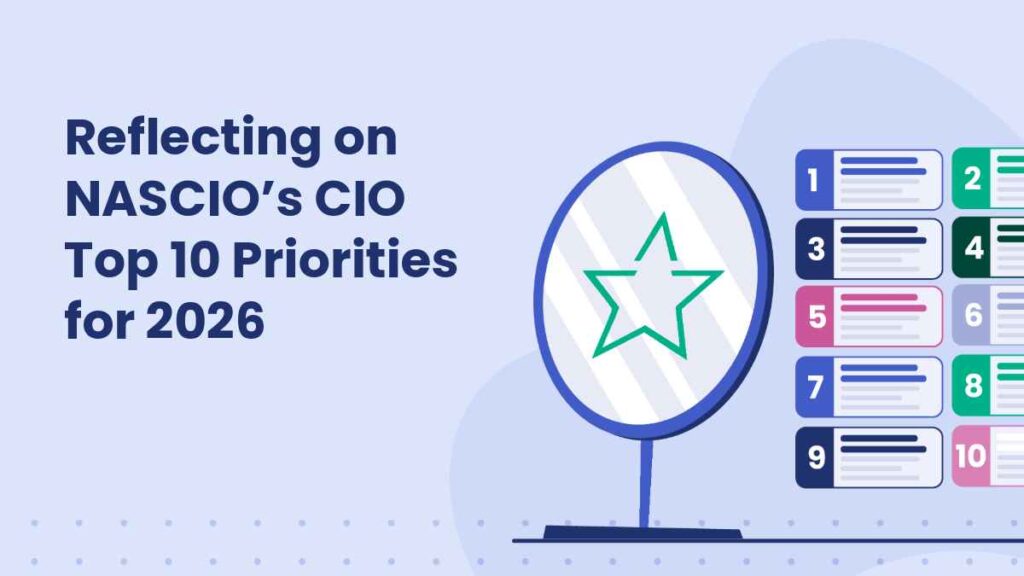Dig deeper: Generational differences in digital government services

Historically, older generations have been slower to adopt new technology, but as the internet has become an integral part of daily life, the gray digital divide might be a thing of the past.
- Baby Boomers represent a growing portion of social media influencers
- In 2023, the average adult over age 50 estimated they’d spend $912 on tech purchases that year
- Almost a quarter of people 50 or older say they’ve used an online dating platform
And, our most recent survey revealed that 70% of people aged 60 or older (and 79% of 45- to 60-year-olds) paid their last government bill online.
People of all ages are using digital government services — not just young people
Despite what most would assume, people from Gen Z and the Silent Generation alike are accessing government services digitally. The use of online services is above 70% for all age groups in our survey, and another international study found that 94% of people ages 45 to 54 years old used digital government services. That percentage dropped a bit as age increased; still, 87% of older people aged 65 to 74 reported that they used digital government services.
The myth of digital natives still persist
More and more people are using digital government services, but that doesn’t mean the user experience is as good as it could be. Although people of all ages encounter difficulties, we found something surprising: The youngest cohort in our study faced the most challenges when paying for government services online.
Percentage of people who encountered three or more problems, by cohort:
- 31% of 18-29 year olds
- 24% of 30-44 and of 45-60 year olds
- 11% of 60+
Another report came to a similar conclusion: More younger respondents reported facing difficulties when using digital government services than older respondents. (They hypothesized that older users may have received more support as part of an ongoing policy to support older digital users, whereas younger people were left to navigate the process themselves.)
Yet in our study (where policies and usage help are unknown), we also found that older cohorts faced fewer challenges: 59% percent of people 60 and over reported having no issues or challenges the last time they paid a government bill online.
Could this be because younger people aren’t as confident navigating government services in general (less life experience), or are younger people just more accustomed to more modern digital experiences?
How the myth of digital natives is showing up in digital government services
It turns out that growing up with internet access and modern technology doesn’t mean you’re tech-savvy. While younger generations can navigate their cell phones, simple apps, and basic software, they’re not all digitally fluent — and frequency of app use doesn’t equal competency with a computer.
What’s not translating from using popular apps is the ability to troubleshoot problems and navigate challenging interfaces. Because younger generations didn’t grow up having to problem-solve technology, a clunky or confusing user interface will likely trip them up.
Trust in digital decreases with age
Data security is one of the main reasons people cite for not using digital government services, and the level of trust seems to decrease as age increases. In our study, 37% of 25 to 59-year-olds and 39% of people 60 and older reported that they were concerned about personal data security — enough so that they won’t be making a government payment online.
Similarly, a Deloitte study (surveying 5,800 people) found that those aged 55 and older cited 12% less trust in digital government services than younger cohorts. (Older respondents also cited a 9% higher concern level regarding a breach of security or data collected by private companies.)
Younger people consistently seem less concerned with data security and privacy. A payments-focused survey from early 2024 found that 40% of Gen Z cite data and privacy as extremely important (compared with 65% of non-Gen Z respondents).
Younger people are also:
- Less concerned about data privacy with private-sector companies
- More willing to exchange personal information in return for a better user experience
- More likely to fall for misinformation online
The lack of concern that younger people have about data security seems to stem from two areas:
- Lack of education about cybersecurity and best practices
- Preference for personalized experiences over privacy
Are people happy with digital government services?
People of all ages seem satisfied with digital government services. In fact, most government agencies are doing a good job of making sure digital services are accessible to people of every age. We found that adoption reached 82% for 30 to 44-year-olds, and even among our oldest cohort of respondents, digital adoption reached 70%.
While 70% adoption of digital government services is promising, it’s worth pointing out that the percentage of digital users does drop with increased age — hinting at decreased levels of satisfaction in the digital experience. In fact, Deloitte reported that:
- 53% of people between ages 18 and 34 expressed satisfaction with digital government services
- People aged 35 to 54 had a satisfaction rate of 51%
- Only 39% of people aged 55 and above said they were satisfied with digital government services
As age increases, satisfaction with digital government services decreases — just as with the trust issue.
What can government agencies do to increase resident satisfaction and digital adoption?
There isn’t a one-size-fits-all approach to encouraging different generations to interact with government online, but research can point you in the right direction:
- Digital government services are for everyone, not just younger generations
- Younger people specifically might operate better with simple, modern interfaces
- Addressing security and privacy concerns is crucial — especially for older residents
- Younger generations might be less aware of cybersecurity but more drawn to personalized experiences
As you modernize, look for software that minimizes complexity and maximizes accessibility; key criteria for digital government services include easy navigation, personalization options, and strong security.
And as you create programs and content to inform and instruct older generations, remember that digital literacy isn’t innate for younger generations.
For more insights, check out our 2024 Consumer Digital Government Adoption Index.
Looking for more content?
Get articles and insights from our monthly newsletter.




